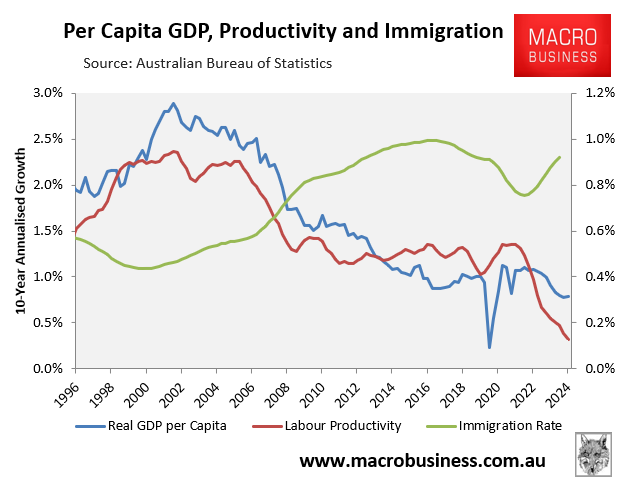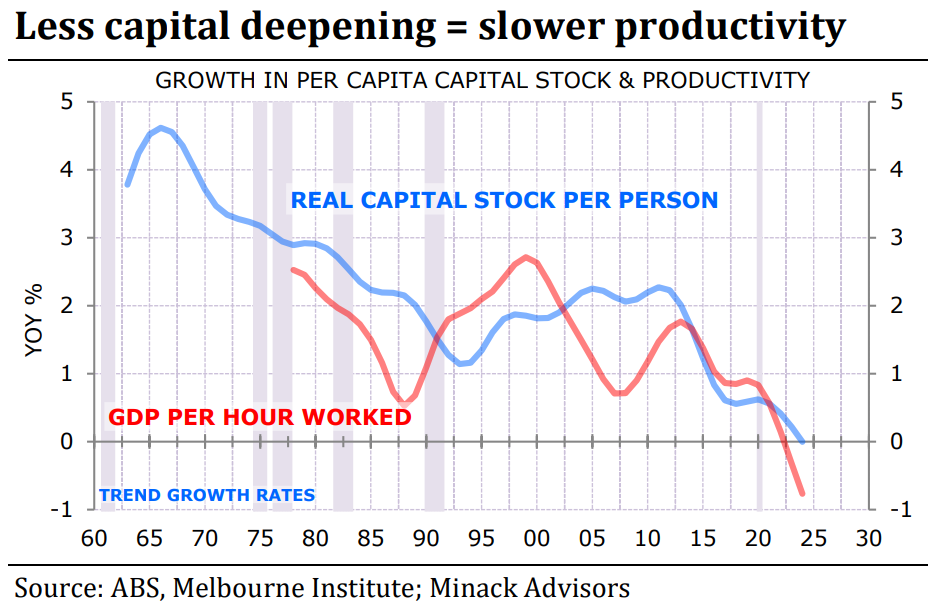On Tuesday, the Fair Work Commission (FWC) decided to lift the national minimum wage and award wages by 3.5% from 1 July this year. The key justification given for the decision was to provide some real wage catch-up.
Business groups met the decision with their usual backlash, claiming that higher minimum and award wages would damage productivity growth.
“Today’s decision by the Fair Work Commission to raise minimum and award wages by 3.5% is higher than necessary given Australia’s abysmal productivity”, said Innes Willox, Chief Executive of national employer association the Australian Industry Group.
“Real wages growth is only sustainable when supported by proportionate productivity uplifts. By giving insufficient attention to the well-established link between real wages and productivity, this decision will further suppress private sector investment and employment generation at a time our economy can least afford it”.
“As employers will need to find the resources to fund these above-inflation wage increases, investment is likely to suffer”, Willox argued.
Australian Chamber of Commerce and Industry (ACCI) chief Andrew McKellar was more circumspect noting that the decision to lift the minimum wage by 3.5% was “built on an assumption of future increases in productivity”, but that “labour productivity has been contracting over the past 18 months and has averaged close to zero over the past five years”.
The reality is that employer groups always lowball on the minimum wage, as illustrated below by Justin Fabo from Antipodean Macro:

A key reason why productivity has been so poor is that Australian businesses have not invested enough to keep pace with the ballooning population.

This underinvestment has resulted in “capital shallowing”, whereby workers have had less capital to work with, resulting in reduced productivity (explained in detail here).

However, as noted by Ross Gittins recently, higher wages can actually spur investment in labour saving technologies, which then fosters productivity growth.
Economics 101 teaches that the main way firms increase the productivity of their workers is by giving them more and better machines to work with. This is called “capital deepening”, in contrast to the “capital widening” that must be done just to ensure the amount of machinery per worker doesn’t fall as high immigration increases the workforce…
Few economists make the obvious neoclassical point that the less the rise in the real cost of labour, the less the incentive for businesses to invest in labour-saving equipment.
So here’s my proposal for encouraging greater labour productivity. Rather than continuing to tell workers their real wages can’t rise until we get some more productivity, we should try reversing the process.
We should make the cost of labour grow in real terms – which would do wonders for consumer spending and economic growth – and see if this encourages firms to step up their investment in labour-saving technology, thereby improving productivity of workers…
The feds could urge the Fair Work Commission to raise all award wage minimums by that proportion at its annual review. If wages of the bottom quarter of workers kept rising by that percentage, it would become very hard for employers to increase higher wage rates by less.
Australia should also cut low-skilled, low-paid migration to lift productivity, given the economy is oversupplied with such workers.

Giving employers easy access to low-wage migrant workers promotes exploitation and stifles productivity growth by deterring firms from implementing labour-saving technology and automation.
Without such access to inexpensive foreign labour, Australian businesses would have to raise salaries and conditions to attract local workers. Higher wages would encourage businesses to invest in labor-saving technologies and automation, increasing the economy’s productivity.
The reasons advanced economies pay the highest wages, achieve the greatest productivity, and enjoy the highest living standards are interconnected.
Productivity-enhancing capital investment, rather than cheap exploitable labour, is an essential component for Australian industry and the economy to thrive.

